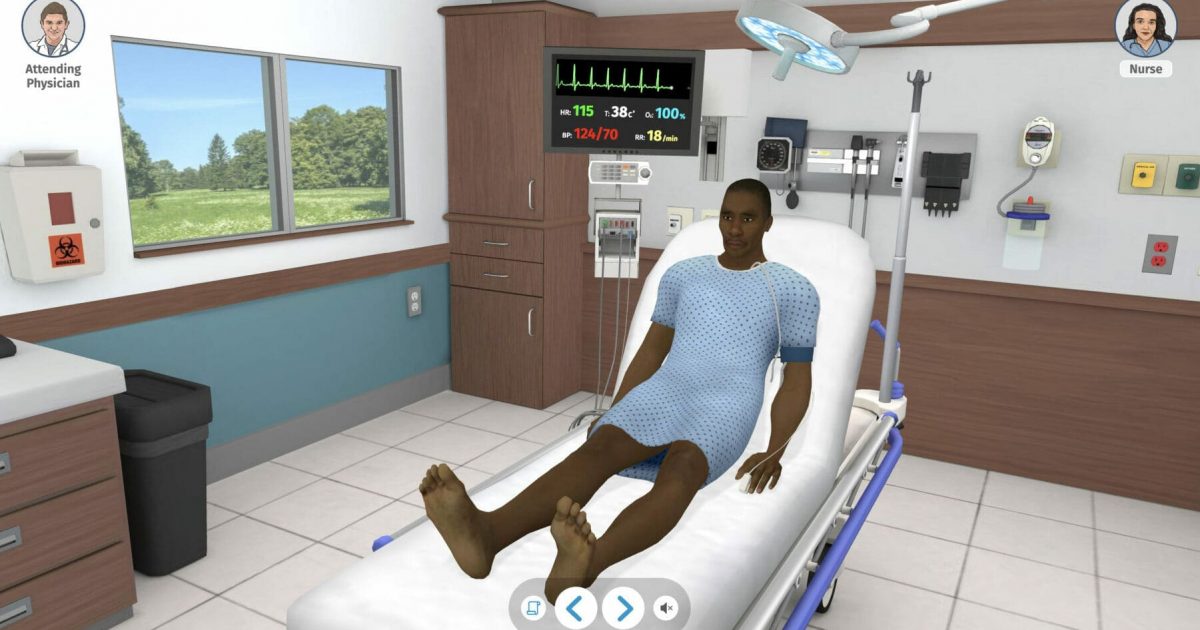Since its inception, medical simulation has evolved to become an integral part of modern clinical education. It has transformed from simple wooden models and task trainers that date back hundreds of years to complex, computerized simulations that today mimic real-life scenarios. Simulation provides a safe, controlled environment for clinicians to hone their skills before applying them in practice. In this article, we will explore a brief history of medical simulation, the definition and types of medical simulation, and how virtual simulation is changing modern clinical training.
A History of Medical Simulation
Early simulation dates back hundreds of years, but medical simulation as we know it saw increasing adoption starting in the 18th century. In the 1920s, as medical practice and training evolved, professionals started using simulations to teach surgical skills, using simple patient models and manikins. Then, in the 1960s, medical simulation continued to expand further with the introduction of standardized patients – actors who are trained to portray medical conditions – as well as the creation of increasingly sophisticated computer-controlled manikins. Standardized patients allowed clinicians to practice their communication skills while manikin-based simulation allowed professionals to practice scenarios on a life-like patient model without the risk of working on live patients. With improvements in technology over the years, computer-based simulations have become increasingly sophisticated and able to better model human physiologic responses, which allowed for more complex and realistic scenarios. Today, medical simulation is a key part of clinical education and training for physicians, advanced practice providers and nurses.
What Is Medical Simulation?
Medical simulation utilizes manikins, computer-based simulations, and standardized patients to emulate real-life scenarios. This allows for the development of technical, cognitive, and behavioral skills in a risk-free environment. A wide range of products are available to assist with procedural training, clinical reasoning skills and team-based learning, with a variety of companies offering high-tech manikins for healthcare training.
Manikin-based simulations have been a mainstay of medical simulation for many years, and this format can be effective for teaching specific skills and procedures. However, simulation manikins can be extremely expensive to purchase and maintain, which can limit their accessibility, especially for smaller healthcare institutions or those in resource-limited settings. The creation of a dedicated simulation space or a “sim lab” can be an even larger investment for training organizations, potentially costing millions of dollars.
To overcome these limitations, educators are turning to newer technologies, such as virtual/augmented reality and virtual simulation, to enhance the effectiveness of medical simulation. These technologies offer more flexibility and allow for more complex, varied and accessible scenarios.
What Is Virtual Simulation?
Virtual simulation is a form of medical simulation that enables medical professionals to recreate real-life scenarios using computer-generated environments. One of the primary advantages of virtual simulation is its ability to create scenarios that are not feasible with other forms of simulation and to provide resources that are easily accessible through various technology platforms. While virtual simulation does include virtual reality (VR) and augmented reality (AR), it is not limited to these mediums. As a matter of fact, virtual simulation can be used with any standard desktop, laptop, or mobile device, without the need for expensive virtual reality headsets or any other specialized equipment that can be cost prohibitive for some learners.
In addition to providing a high level of realism, virtual simulation offers several other advantages over traditional simulation methods. Virtual simulation allows learners to interact with digital models of the human body, which can be customized to suit individual learning needs and to represent a significantly more diverse patient population.
Another advantage of virtual simulation is that it allows learners to repeat scenarios as many times as they need to achieve mastery without the need for expensive manikins or a dedicated sim lab. This can be particularly useful for learners who are struggling to grasp a concept or skill, or who require remediation in a certain content area. Moreover, virtual simulation can be used to supplement traditional classroom instruction, providing learners with a more engaging learning experience that anchors key learning points from their didactic or small group sessions.
Virtual simulation has been shown to be an effective tool for medical education and training. Research has demonstrated that learners who use virtual simulation as part of their training program achieve improved learning outcomes and perform better in clinical settings than those who use traditional simulation methods alone. As a result, virtual simulation is becoming an increasingly popular tool for medical education and training, and is likely to become even more prevalent in the years to come.
Explore Virtual Simulation with Full Code
Full Code is a virtual simulation platform that allows medical professionals to practice and improve their skills on-the-go. Full Code provides a library of realistic medical scenarios that can be accessed from anywhere, at any time. Full Code allows medical professionals to hone their skills in a safe and controlled environment, without the need for expensive equipment or facilities. Our platform is affordable and accessible, making it an ideal tool for medical education and training around the world.
Given these advantages, Full Code is an incredibly valuable tool for modern medical professionals and clinicians-in-training. Whether you’re a student, resident, or practicing clinician, Full Code can help you gain confidence and proficiency in managing medical emergencies. Why not give it a try today?






